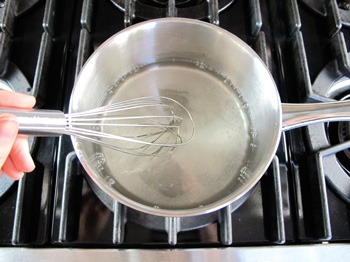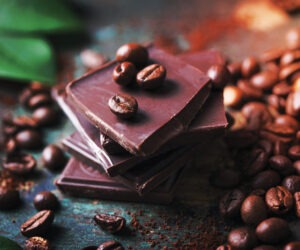Sugar Syrups

A staple in many Belgian and English beer styles, sugar syrups provide key characteristics to several of them. Learning when and how to use them to your advantage as well as the various techniques to produce them can help you achieve new heights in many of your recipes.
So what are sugar syrups and why are they beneficial? Well first off, as the name implies, they’re a solution of sugar and water. Sometimes additives are included to raise or drop the pH, which is meant to affect key chemical processes while cooking the syrup. Others may add something like dried malt extract to allow some melanoidin reactions to take place as well. The best thing to do is to read up on others’ experiences creating their own versions, then buying a big bag of sugar (corn or table sugar) and start experimenting on your own.
So what are the benefits of using sugar syrup versus just dumping sugar in straight from the bag? The main goal of using darker syrups is to gain color and flavor characteristics due largely to caramelization reactions that take place during the cooking process. In the brewing process we mainly talk about Maillard reactions and their melanoidin products. Melanoidins can give us baked bread, toasted nuts, and even coffee characteristics. Caramelization products can provide more of a dried dark fruit and caramel . . . well-fitted for a Belgian dubbel or English mild.
Another benefit may be found in the yeast’s ability to more easily ferment syrup that has been cooked compared to unaltered table sugar. That is because table sugar is comprised of sucrose, which yeast need to break down into its components, fructose and glucose, before yeast can ferment it. When sugar is heated into a syrup, sucrose will naturally start this hydrolysis process of splitting, something we call inverting the sugar. Inverting sugar also means that the sugar will not easily recrystallize after cooling.
Timing Your Syrup Addition
You can add the syrup in either the boil or the fermenter. When brewing lower gravity beer, I generally advise adding the syrup directly to the boil kettle. It’s easy, it assures it will be sterile, and it gives yeast simple sugars to work with to begin fermentation. But when brewing bigger beers like a Belgian quad or a barleywine, then I will hold off on adding it until I notice peak fermentation has passed. Too much sugar in solution at the beginning of fermentation can cause problems for yeast. So sugar is best fed to them to minimize this osmotic shock.
Making Simple Syrup
The most basic form of sugar syrup is to make simple syrup. This would be clear in color and best utilized in those Belgian golden ales, saisons, or West Coast IPAs. To make one is fairly simple; you are adding anywhere from 4 parts sugar to 1 part water all the way up to 2 parts sugar to 1 part water. You may want to add a little acid here to help speed up the acid hydrolysis reaction that will invert the sugar, maybe a squirt of lemon juice or a bit of acid blend. Add heat to dissolve the sugar in the liquid and to sterilize the solution. I usually just bring it up to a boil and then turn off the heat. Make sure to filter your water or use distilled water if there are any chlorine compounds in your tap water.
Making Darker Syrups
Making darker syrups are going to be more involved. You may also consider utilizing a few more ingredients and I highly recommend that it be performed using either a candy thermometer or other way to gauge temperature up to about 350 °F (180 °C). The fact is there are many ways to get good results. You can simply try using sugar and water. Some folks will add a nitrogen source in order to increase Maillard products. People will often look to increase or decrease pH depending on their goal. These variations are dependent on the characteristics you are after in your final product.
In order to produce what I am after in, say, a Belgian dubbel, I use the following: Starting with 1 kg (2.2 lbs.) sugar add just over one cup (250 mL) of water and stir over medium-low heat until a slurry is achieved. Bring to a boil, stirring, but be careful of spatter. I highly recommend using silicone or brewer’s gloves when performing this task as well as some form of eye protection. Add ½ tsp. of DAP (diammonium phosphate), available at any homebrew shop, and stir to mix in. Insert thermometer and continue heating over medium to medium-low heat until the temperature rises to roughly 290 °F (143 °C), then remove from heat and add about 12 oz. (350 mL) of water. Once again, take care of spatter from the pot, as the superheated solution will try to quickly boil off the liquid.
I like to perform this task just prior to cooling and adding direct to either the kettle or fermenter. Typically, I have used just common cane sugar, but feel free to experiment with other types of sugar like a raw, jaggery, demerara, or panela sugar if a little molasses character might be beneficial. Finally, I highly recommend checking out the following blog post: https://ryanbrews.blogspot.com/2012/02/candy-syrup-right-way-hint-weve-been.html
It explores some alternative methods and ingredients. Again, there is no right way . . . just better ways.



